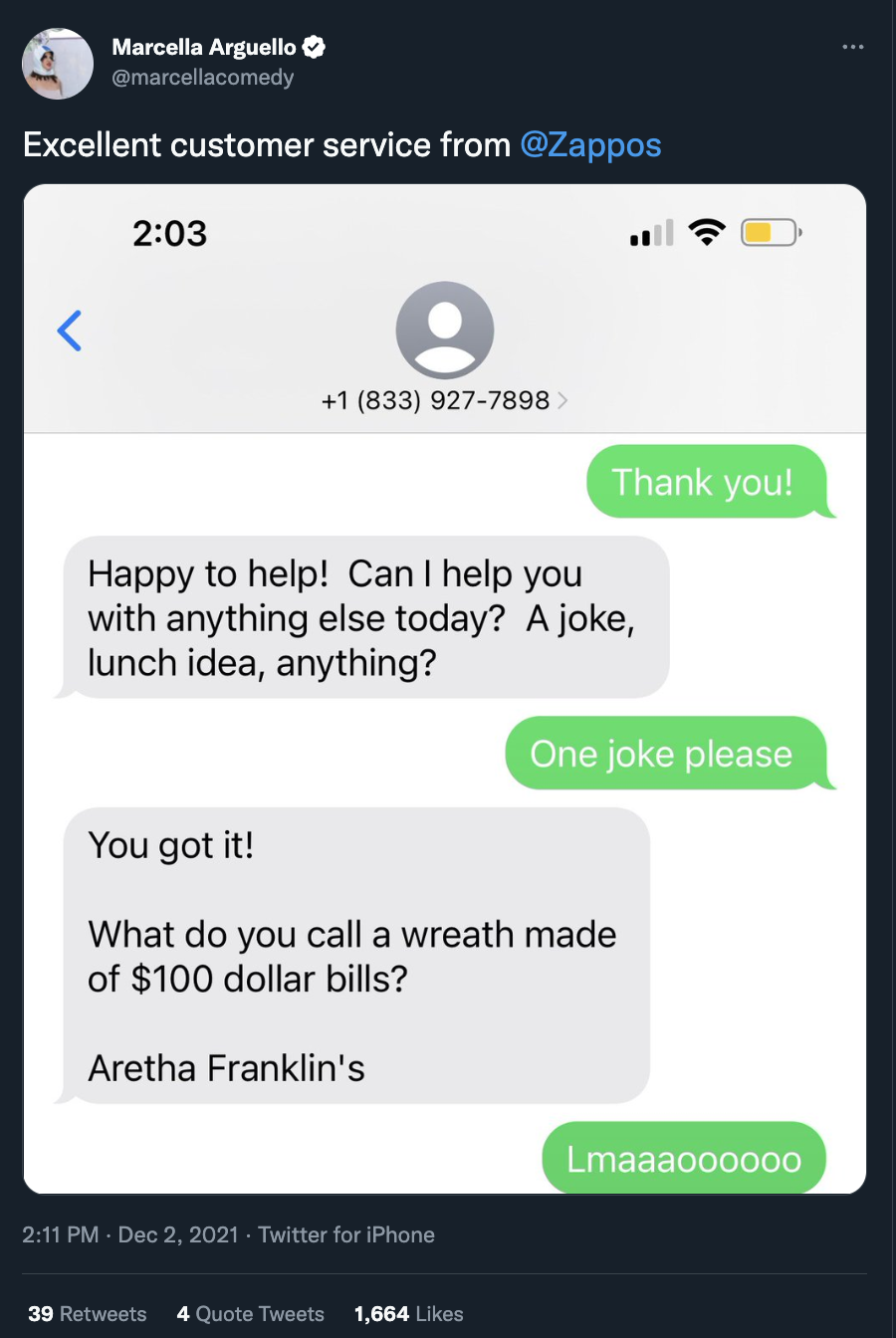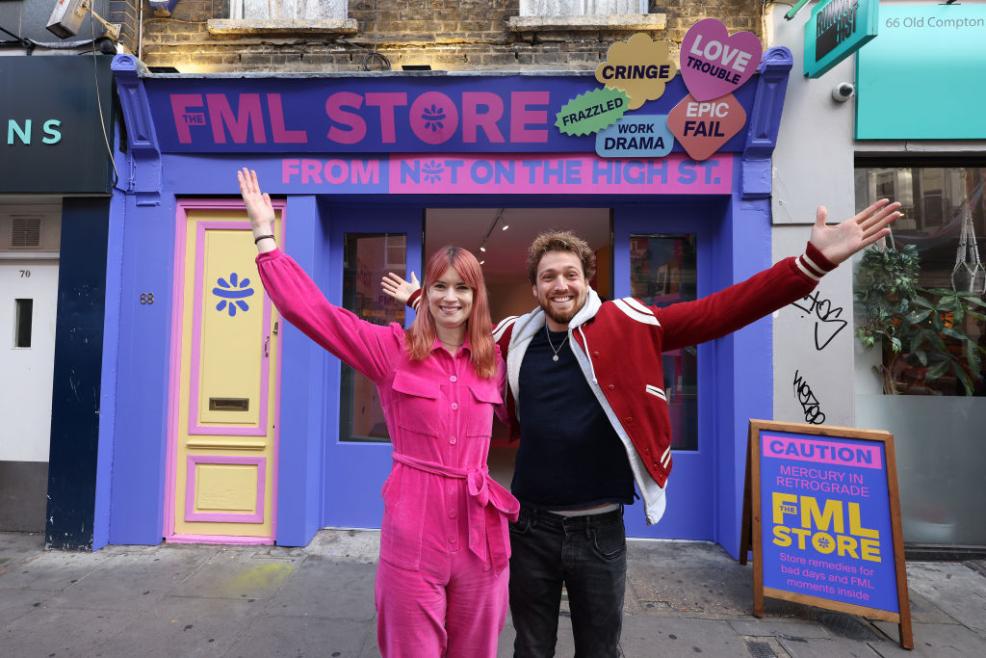The Importance of Brand Awareness in Marketing

Nate Holmes
Sr. Manager, Product Marketing
You want people to recognize your brand when they see it. That’s because brand awareness influences the buying process. If a consumer is already aware of your brand, they’re more likely to continue their purchasing journey with you. If they don’t know anything about your brand or product, it will take more effort to familiarize them, or they might just move on to a different brand they already know and trust. That’s why marketing and brand awareness go hand in hand.
The recognition that brand awareness stimulates doesn’t happen by accident. It’s supported by a constellation of marketing channels and collateral — social media; word-of-mouth; TV, influencer, and celebrity endorsements; product placement; display ads; and blog posts. You need a combination of paid and organic approaches to get your name, logo, product, and values into the collective consciousness. To reach new customers and grow market share, your marketing strategy needs to include brand awareness.
Let’s take a look at exactly what brand awareness is, why it’s important, how you can build it, and ways to measure its effectiveness at your company.
What is brand awareness?
| Brand awareness is a measure of how familiar customers are with your brand. It includes everything from name recognition to their knowledge of your brand’s products, services, reputation, and values. It’s an early step in a customer’s path to conversion — the more they know about your brand, the better. |
Remember: Your brand is more than a name on a label or a logo on a website; it’s an identity. People relate to your brand because of your “why” — what you stand for and how you interact with the world. The way they experience your brand for the first time leaves a lasting impression — one that remains after someone encounters or engages your brand in any environment.
But to generate positive awareness, you need a cohesive story.
While much of a customer’s perception of your brand develops apart from you, you still control your story — if you have a clear brand management strategy and consistently implement it across all channels. Define the messaging for your company, establish your visual style, clearly communicate what your product and brand are about, and then people will know what you stand for and their relationship to you.
You usually hear about brand awareness during agency pitches or creative meetings, but it deserves a central place in everyday marketing conversations. Here’s why.
What is brand awareness in marketing?
Every message you send, every ad you buy, and every piece of content you share can be used to build awareness. Of course, your visual identity (logo, brand colors, design, style, etc.) has an impact on foundational brand awareness, but it’s your content and digital assets that get the message across and grow market share among audiences.
Brand awareness in marketing starts when your company recognizes customers needs, behaviors, and values. Then you have to communicate with your customers through their preferred channels to make sure they know you’re there to help them get what they want. This might come from SERPs, educational content on your website, or entertaining social media posts. Whatever you do, make sure your brand is top of mind in some way so that people connect the dots between your products, services, and brand.
For example, Liberty Mutual excels at using videos to build brand awareness. They make a notoriously boring service interesting and memorable while making sure people remember what their brand does. If you weren’t familiar with Liberty Mutual before, now you know it can customize your home insurance so that you only pay for what you need.
With clear brand messaging that’s aligned and consistent, the first impression you make will be sure to stick. If you’re buying home insurance after seeing that ad, chances are you’re more likely to research Liberty Mutual’s services.
But you don’t need to pay an ad agency to come up with expensive campaigns like that to generate awareness. You can use everything from email newsletters to product launch events.
What matters most is that your company is on board with investing in brand awareness as a key element of your unique marketing strategy.
Why is building brand awareness important?
In the sales funnel, awareness is at the top. Without knowing your brand, people aren’t likely to move on to the next step in the funnel — consideration or interest. Once they seek information about your brand or products, they’re considering a purchase. That’s when they compare your company with other brands and weigh how confident in or familiar they are with your brand versus any others.
Deloitte found that customers are likely to spend 140% more after a positive experience than customers who report negative experiences. That means if the awareness you created at the top of the funnel was positive and your marketing upholds that sentiment consistently throughout the customer journey, then consumers are more likely to purchase more from you. Generating brand awareness brings customers into the sales funnel, giving marketing teams leverage. Brand awareness is also the first step in building brand equity and brand loyalty, both instrumental in increasing customer lifetime value.
Other benefits of building brand awareness to keep in mind include:
- Establishes brand loyalty
- Elevates brand equity
- Increases the perceived value of products and services
- Larger market share and more revenue potential
- Expansion into new markets and audiences
- Improves brand perception and name recognition
- Higher likelihood of collecting customer data
Building awareness might involve something as simple as using consistent content marketing to alert consumers to your brand’s flagship product. Or it can be as complex as orchestrating personalized customer journeys that improve the whole brand experience. Where you start building brand awareness will depend on your marketing initiatives and goals.
Let’s explore some of the methods organizations use to create brand awareness.
How to build brand awareness
If you don’t have the budget to hire an ad agency to create high-quality ads or the connections for Netflix product placement, you can still raise awareness about your brand. You can publish content, participate in social media, build partnerships, work with influencers, and choose from many tactics to lure people to the top of your sales funnel.
Consider these options:
1. Create quality content consistently. Agile content creation is critical to any modern marketing strategy. By publishing a constant stream of useful content across your website, email, social accounts, and other channels, you can answer customer questions, move up in search results, and generate buzz about your brand.
2. Deliver memorable customer service. People love to dish about frustrating wait times when looking for customer support.

But they also talk about the delightful and unexpected experiences generated by companies that invest in customer service. Some, like Zappos, build their brands on customer service. If you can deliver top-notch customer experiences, people will talk your brand up in a good way.

3. Advertise anywhere you can. Reddit, podcasts, streaming TV, billboards, video display ads, Google ads … if you can pay for it, these methods raise brand awareness over time. If you’re not ready for a Super Bowl commercial, you can start with paid social ads and pay-per-click (PPC).
4. Establish a physical presence. Even as the world increasingly embraces virtual and digital experiences, physical interactions remain vital. Give people a chance to touch your product and meet your employees. For some brands, a pop-up brick-and-mortar location is an effective way to generate new awareness.

5. Create and participate in events. Host a conference, buy a booth at an industry event, or throw a product launch party. Interact with customers and prospects socially as much as possible. They’ll remember personal experiences with your brand, even if it’s across Zoom at a digital summit.
6. Develop sponsorships and partnerships. Sponsor a sports team, partner with a big company in a different industry, or develop celebrity relationships. Find other brands and recognizable personalities that match your values. You’ll start to reach their followers and generate awareness among new audiences.
7. Hire a PR agency. Yes, this still works. While traditional press releases might not generate much awareness, modern PR agencies know how to get your brand in front of audiences that matter. They’ll have media connections that your marketing team doesn’t and ideas that may not have occurred to you.
8. Build influencer marketing. TikTokers, YouTubers, and other content creators are highly important to Gen Z. For example, 52% of Gen Z trusts influencers they follow on social media for advice about products or brands, according to McKinsey. At 11%, Millennials are less likely to be swayed by influencers, reports Marketing Charts, but they still play a role in their purchasing decisions. No matter the generation, make sure to find influencers who are an authentic match with your audience and invest in collaborations with them.
Many of the methods above require substantial marketing investments, but you can manage costs over time if you measure the impact of your efforts. Below are some of the ways you can track those efforts.
How companies measure brand awareness
Awareness is a tricky thing to measure, but it can be done. You can use everything from content analytics in your digital asset management (DAM) system to social media engagement. Whatever you track, make sure you organize the data and that it’s easy to understand. Sometimes that’s the biggest challenge.
Ultimately, if you really want to measure brand awareness, you’ll need a data science team. They can move data from many sources (website analytics tools, a customer data platform (CDP), a customer relationship management (CRM) system, etc.) into one place and then analyze it from there with machine learning models to produce the information you need.
Metrics you’ll want to track include:
- Web traffic
- Content engagement
- Social subscribers, views, comments, shares, mentions, etc.
- Results from brand awareness surveys
- First-time customers counts
- Media mentions
- New email subscribers
While it’s ideal for any data-drive brand to have DataOps resources devoted to tracking brand awareness, it’s not a must-have. You can learn a lot from what your marketing team already tracks and measures.
Where to go from here
You’ve learned that building brand awareness is a crucial success factor. It grows brand equity, brand loyalty, and name recognition. It also leads to greater market share with higher revenue potential. If those goals speak to your company, you must give brand awareness a central place in your marketing strategy.
Once customers know your brand, products, and services, they’re more likely to continue on the buying journey. The tactics to shepherd them vary based on your brand’s values, marketing capabilities, and budget. Depending on your investment, you can develop a plan that includes everything from paid social ads to streaming TV spots. And don’t forget to agree on metrics so that you can track your progress and understand brand awareness ROI, too.
Having the right marketing technology (martech) stack is another crucial piece of the brand awareness puzzle. For example, a DAM solution can help marketing, sales, and e-commerce teams uphold brand management, coordinate workflows, and keep content current and consistent.
If you want to know more about how a DAM system can generate brand awareness, take a look at how Acquia DAM empowers organizations to build compelling digital experiences. Then, when you’re ready, request a demo to see our DAM platform in action.


